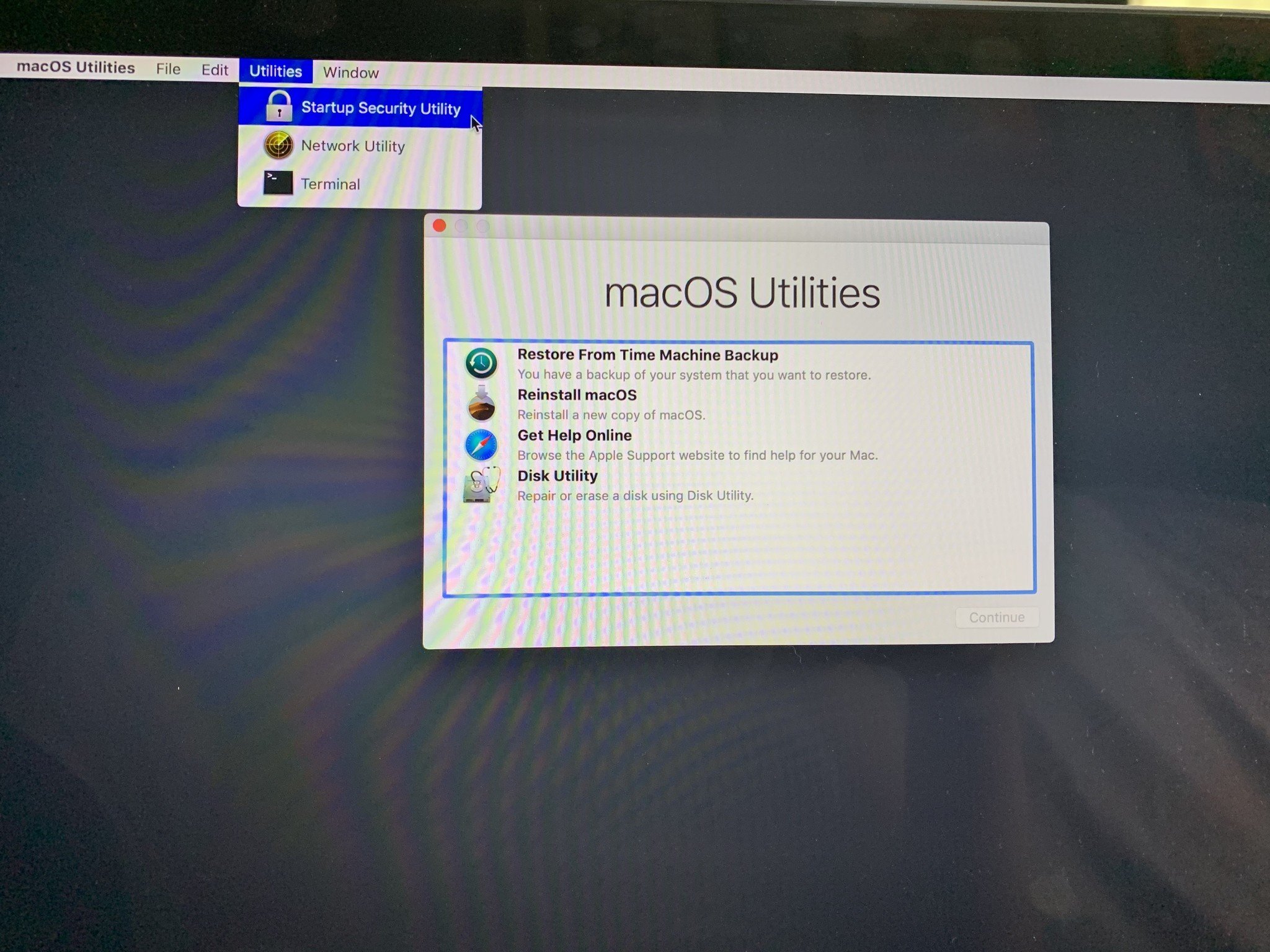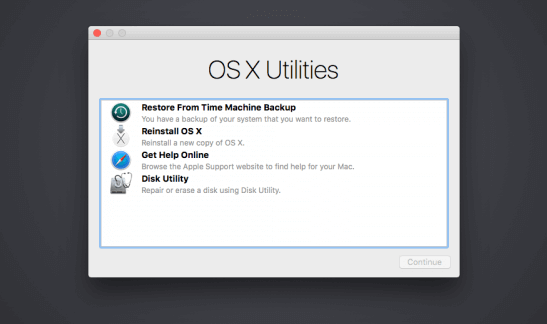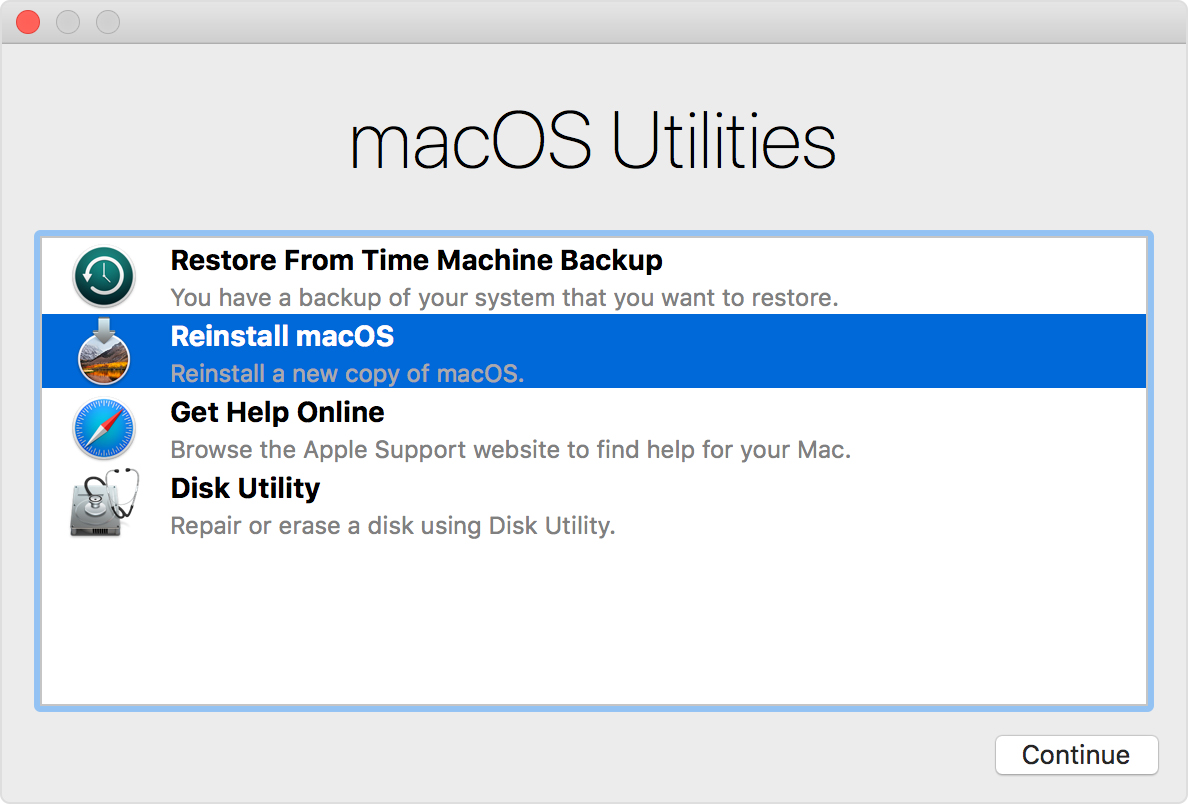

- #Mac os x startup disk utility how to#
- #Mac os x startup disk utility mac os x#
- #Mac os x startup disk utility install#
If you’re still experiencing issues starting up your computer, there are some alternatives to try, including use of fsck in a command-line interface. Disk Utility will then run a scan and repair on the disk. Select your OS X volume, and click “Repair”. Click the triangle to the left of the hard drive icon to display a list of your disk volumes and partitions. Once in Disk Utility, either from an installation disc or in the Recovery System, proceed to the “First Aid” tab. (Do not click Continue in the first screen of the installer, or you’ll have to start up from the disc all over again to access Disk Utility.) Choose Disk Utility from the Installer menu. Hold the C key during start-up after inserting the disc. Select Disk Utility from the Utilities window in macOS Recovery. When you see the Utilities window, startup is complete. Disk Copy was used for mounting and creating disk images files where as Disk Utility was used for partitioning, creating, fixing and checking file structure. Prior to version 10.3, its functionalities were spread across two applications such as Disk Utility and Disk Copy.
#Mac os x startup disk utility mac os x#
When you see a startup screen, such as an Apple logo or spinning globe, release the keys. In Mac OS X 10.3 version, disk utility function was updated.
#Mac os x startup disk utility install#
If running Mac OS X v10.6 or earlier, you’ll need to run Disk Utility from a Mac OS X install or restore disc. To do this, restart your Mac and immediately press and hold Command + R. (Note: you can also access Disk Utility from Mac OS X Internet Recovery – for more information, click on the Apple link at the bottom of the page.) Following Recovery System start-up you should see a desktop with an open “Mac OS X Utilities” window.

Once you see the Recovery Mode pop up, select Disk Utility from the OS X.
#Mac os x startup disk utility how to#
If running Safe Mode is unsuccessful in fixing start up issues, or if you’re using a version earlier than Mac OS X 10.2, fix file system issues using Disk Utility:īoot into the Recovery System – press command+R as early as possible during start-up, and hold until the Apple icon appears. How to make macos catalina bootable USB installer with clover boot manager on a. Note: Safe Mode won’t work if you have a firmware password. Safe mode should take itself though any checks and repairs, and you can restart your computer without holding any keys to leave safe mode. A progress bar should then appear, indicating that safe mode is performing a directory check. Release the key when you see the gray Apple icon and spinning wheel. Make sure your computer is shut down – then when turning the computer back on, start holding the shift key immediately after you hear the start-up tone. If using Mac OS X 10.2 or later, you can start up in Safe Mode, which automatically performs disk check and repair: This article provides a couple preferred ways to fix these issues on a Mac computer. We'll see if the developer is up to the challenge or if the negative feedback cools his enthusiasm for the project.Improper shutdown or power interruptions can create file system errors that stunt the start-up process. So three stars is all I can give it, do to the inadequate user interface. The best that can be said is that Install Disk Creator is a work in progress and has little or nothing to recommend it over DiskMaker X. Once booted from OS X recovery, select Terminal from the utilities and then at. Sometimes Disk Utility can't repair a disk. You can try booting from OS X recovery by holding CMD + R at the time of startup. Step 4: Wait until the process is done and click 'Complete'. Step 3: Select the greyed-out Macintosh HD and click First Aid on the top of the Disk Utility window. Step 2: Select Disk Utility from macOS utilities and click Continue.

It also does a lot better job explaining what's going on, which helps prevent mistakes. Step 1: Boot your Mac into macOS Recovery mode. It sniffs out all and any installers on media in or connected to your computer, including external drives, which is where I happen to keep my installers. And it is functionally more complete as well. In the meantime, DiskMaker X has plenty of cues and prompts. We can hope the developer takes the time to finish the app. In other words, this app is incomplete as far as user feedback is concerned. Which is a problem: function aside, there are not enough indicators showing what's going on, not even a "finished" or "done" button. In fact, it was so fast that I didn't know it was done. OK, I downloaded Install Disk Creator and it works just fine.


 0 kommentar(er)
0 kommentar(er)
